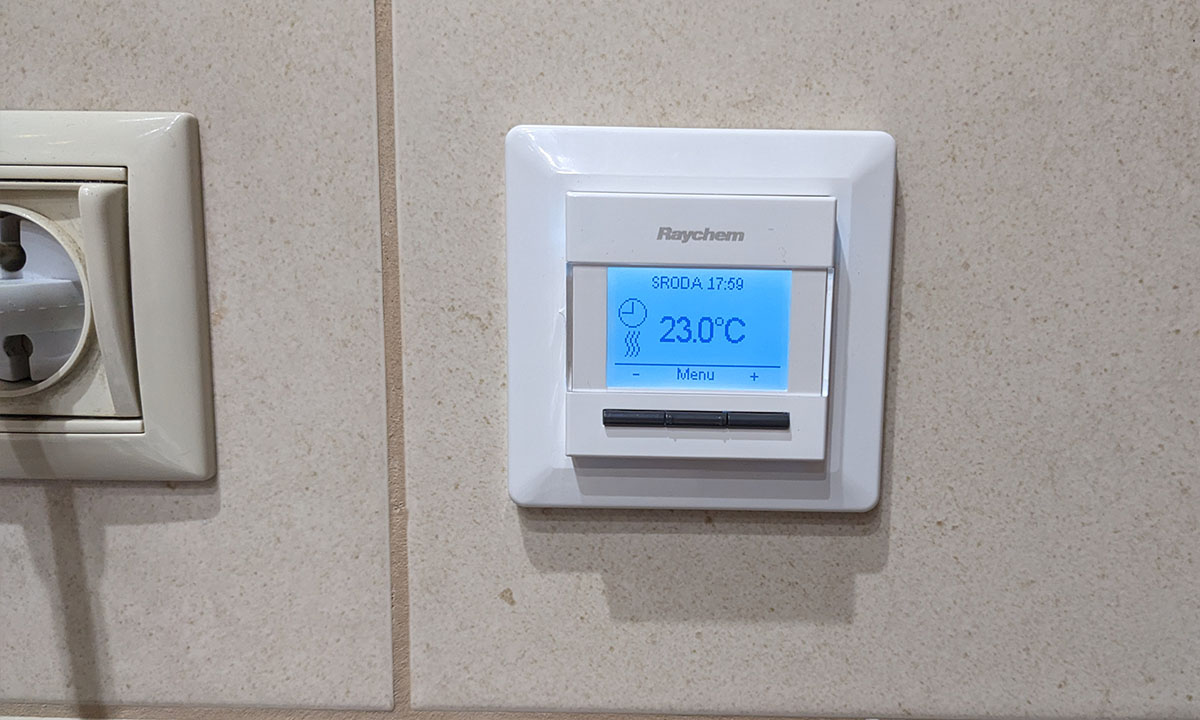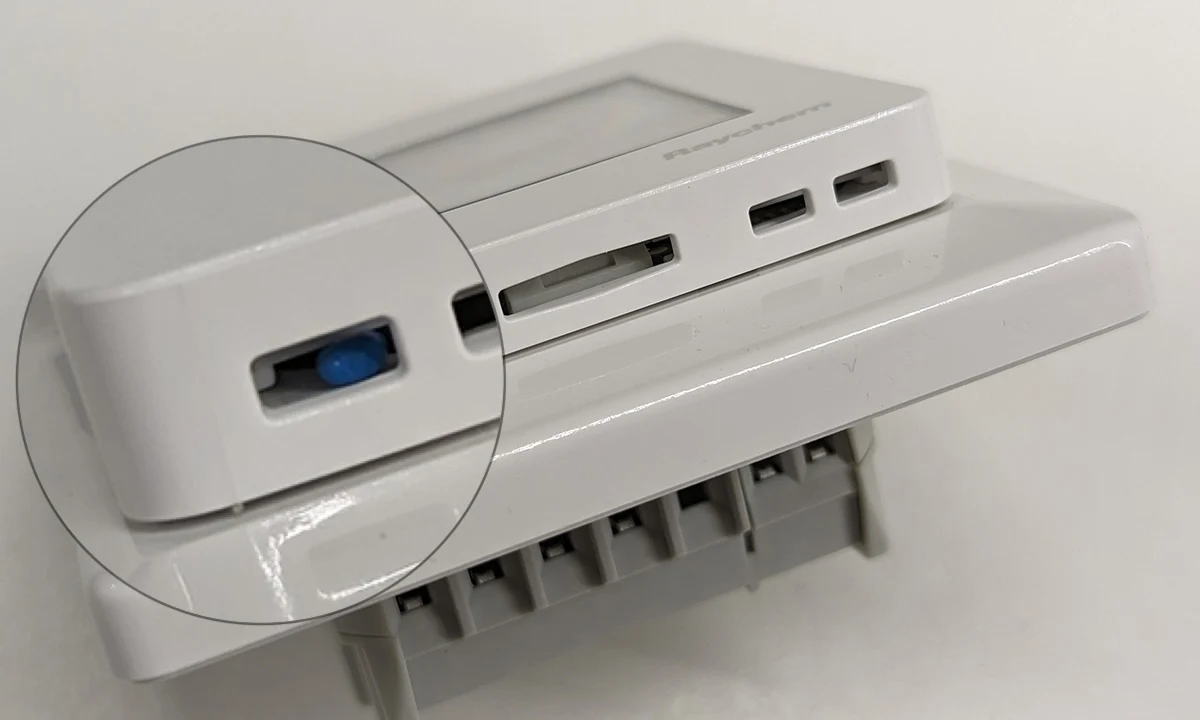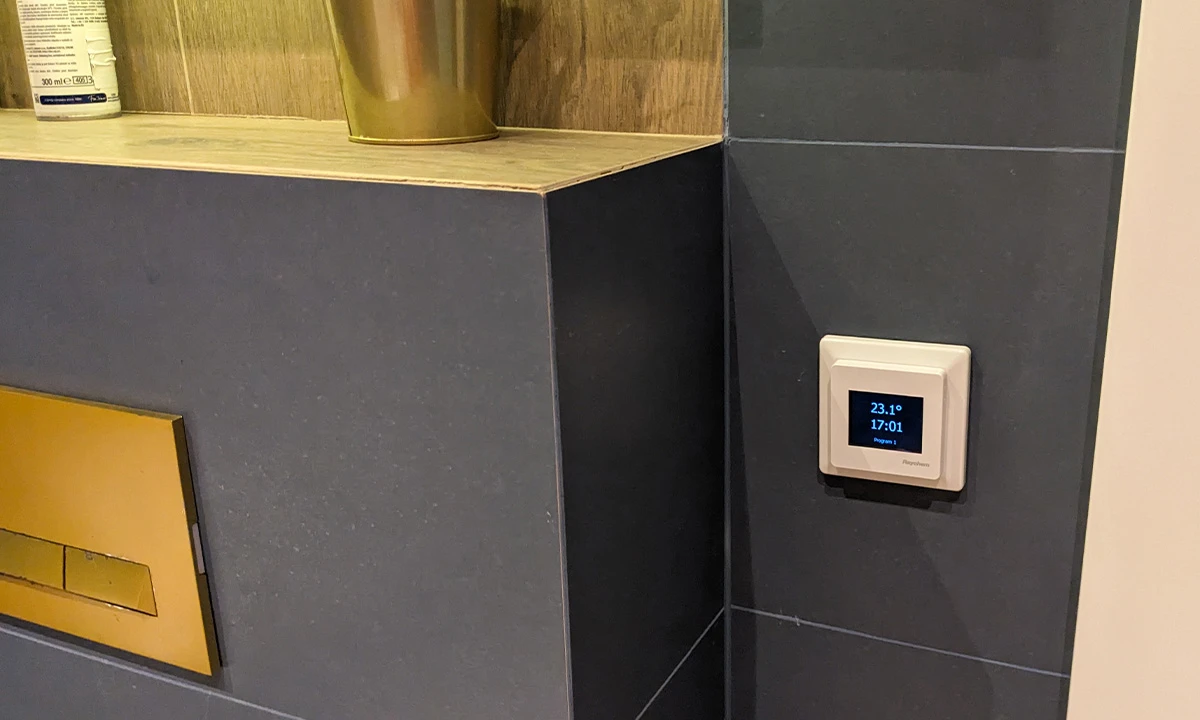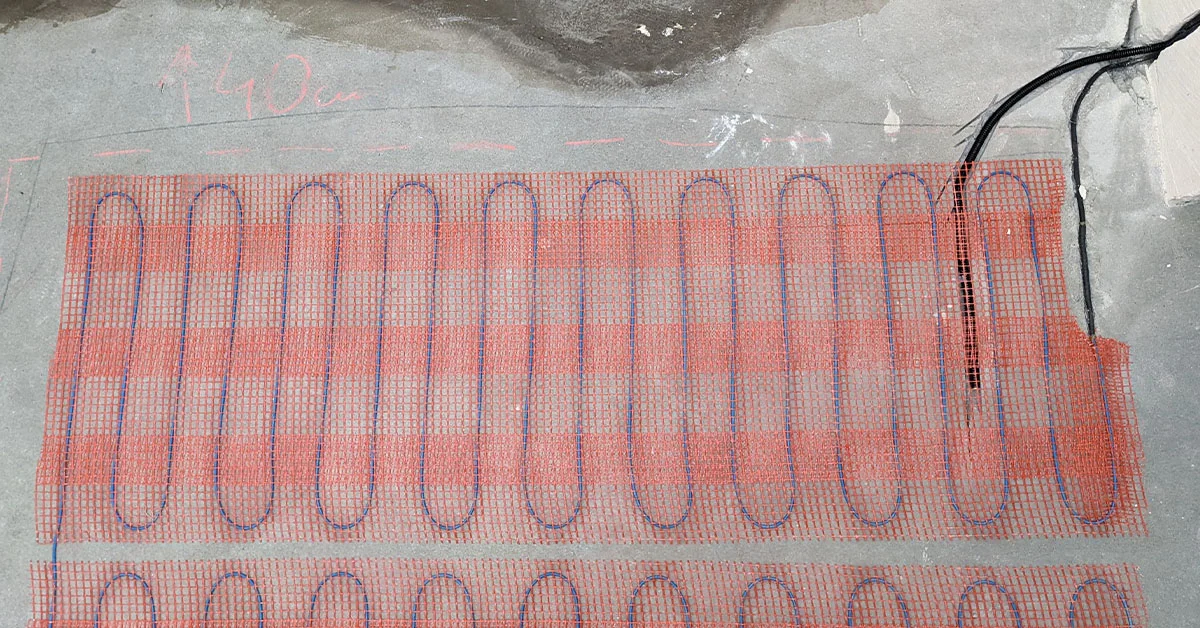Thermostat in the bathroom or outside?

When installing electric underfloor heating, for example, in the bathroom, it is also necessary to install a floor thermostat, which will control the operation of the entire system. The question immediately arises, where to place such a device? It seems natural to install the controller in the bathroom itself. However, there is often a temptation to place it outside - for example, because of the conditions in the room. Where is it best to place the floor thermostat inside or outside the bathroom, and why? Below you will find the answer to this question.
Choice of temperature control in the bathroom
Depending on the functionality of the thermostat, the user programs the preferred variant of the heat level for specific time intervals. When the temperature falls below the settings, the floor heating is activated. On the other hand, when the desired level is reached - the power is disconnected.
Activation and deactivation of heating cables is based on the settings set by the user in the floor thermostat, usually there are options to choose from:
- Control relative to ambient temperature. Only the air sensor operates. (This setting is not recommended because a floor without a temperature sensor can reach a very high temperature.)
- Control relative to the floor temperature. Only the floor sensor operates.
- Control relative to ambient temperature with lower and upper floor temperature limit. Air and floor sensor works.
If the thermostat is to be responsible for maintaining the air temperature, it must always be in the room it controls. If the thermostat is only to control the floor temperature to achieve a "warm floor" effect, exceptionally we can install it outside the bathroom.
If we are going to use the air temperature sensor, we install the thermostat in the bathroom
If the floor thermostat has an air temperature sensor in its housing, and it usually does, and is also to regulate the air temperature in the bathroom, its installation in the bathroom becomes a necessity. In this case, special care must be taken to comply with regulations and safety standards.
- Protective zones: the thermostat can only be installed in the corresponding protective zone of the bathroom. According to the standards, electrical devices can be installed in zone 3, which is farthest from direct contact with water (at least 60 cm from the edge of the bathtub or shower). Electrical protection zones in the bathroom.
- IP degree of protection: a thermostat installed in a bathroom in zone 3 must have an adequate degree of protection against moisture and splashing water, min IP21. In contrast, an IP44 degree of protection is required. Degree of protection IP44 means that the device is protected from splashes of water from any direction. Bathroom thermostat how to increase the degree of protection to IP44.
- Shock protection: All electrical equipment in the bathroom must be protected against electric shock. It is necessary to use residual current circuit breakers (RCDs) with a residual current of not more than 30 mA. Which fuse for the heating mat?
Placing the thermostat in the bathroom allows easy access to adjust the temperature of the floor without leaving the room.
Air temperature sensor, pay attention to it!

The air temperature sensor is located in the thermostat housing. What does this mean? That by placing the controller in another room behind a wall, it will rely on readings from another room.
Pay attention to where the thermostat is mounted on the wall. Do not install the thermostat in a place where there are large and frequent temperature fluctuations, such as:
- above the washing machine,
- near the radiator,
- in a place where the sun's sharp rays fall,
- in a place where there are drafts,
- in a place covered by curtains, furniture, etc.
If we will NOT use the air temperature sensor, the thermostat can exceptionally be installed outside the bathroom

Installing a floor thermostat outside the bathroom is often preferred for reasons of simplicity and safety, but only if we turn off the air temperature measurement in the thermostat. This way we will only be able to control the floor temperature, which will give us the comfort of a "warm floor." The thermostat can be placed in the hallway or other room adjacent to the bathroom, which eliminates the risk of direct contact with water.
Advantages:
- Electrical safety: The bathroom is a place with high humidity, which increases the risk of electric shock. Mounting the thermostat outside minimizes this risk.
- Compliance with standards: Electrical safety standards, such as PN-IEC 60364-7-701, require that control devices that are not designed for wet conditions be installed outside areas exposed to direct contact with water.
- Device protection: Placing the thermostat outside the bathroom protects it from moisture and corrosion, which prolongs its life and ensures proper operation.
- Protection from damage: A thermostat placed outdoors is less likely to be accidentally damaged, such as when cleaning or using the bathroom.
Disadvantages:
- Lack of ability to regulate the air temperature on colder days, when the central heating in the house is turned off or during its failure.
Temperature sensor in the floor, pay attention to it!

Properly installed, it reads the temperature of the floor in which the heating mats / heating cable are embedded. Thus, the thermostat prevents the temperature of the floor itself from increasing too much. Its measurement alone does not directly translate into the air temperature in the room, but it prevents the proper operation of electric floor heating. How to properly install the floor temperature sensor.
Thanks to the floor temperature sensor:
- We protect the heating cables from getting too hot and thus burning out.
- The floor will always have an optimal temperature that will allow us to stand barefoot.
- We will protect heat-sensitive floors from excessive heat, and thus from deformation or color change.
Summary
Thanks to the information you have just obtained, you will no longer make the common mistake with the installation of a thermostat. This is important in terms of safety, as well as the proper operation of the underfloor heating system itself.
Recommended

Thermostat for electric underfloor heating, programmable weekly, controlled by app, WiFi, black, 12-year warranty - RAYCHEM R-SENZ-WIFI 1244-017778

Thermostat for electric underfloor heating, programmable weekly, black, warranty 12 years - RAYCHEM R-GREEN-LEAF -EU

Thermostat for electric floor heating, weekly programmable, adaptive function, white, 12-year warranty - RAYCHEM R-NRG-DM

